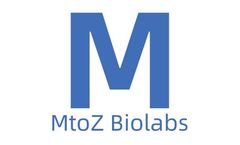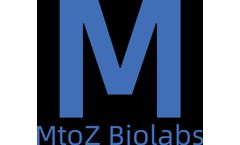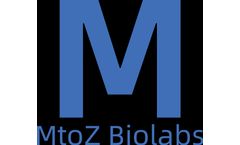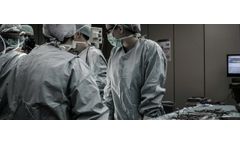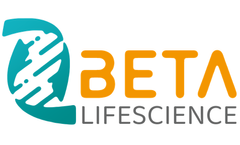Refine by
Blood Vessel Articles & Analysis: Older
84 articles found
These specialized cells line the blood vessels within skeletal muscles, forming a barrier that regulates the exchange of substances between the bloodstream and muscle tissue. ...
Wharton’s jelly is a gelatinous substance that surrounds the umbilical cord’s blood vessels, providing structural support and protection. It is rich in mesenchymal stem cells (MSCs), which are known for their unique regenerative properties. ...
Collagen is an important structural protein that is widely found in various biological tissues, such as skin, bones, tendons, and blood vessels. Accurate determination of collagen content is very important for biomedical research, disease diagnosis and quality control of related products. ...
The field of medicine is constantly evolving, with new procedures and technologies emerging that improve patient outcomes and reduce recovery times. As these innovations advance, the materials that make them possible become increasingly important. One such group of materials, fluoropolymers, is proving to be essential for a variety of cutting-edge medical procedures. Known for their exceptional ...
Glycated collagen mainly exists in various tissues in the human body, especially those rich in collagen, such as skin, bones, joints, blood vessels, and other connective tissues.Under normal physiological conditions, glycation occurs as a natural biochemical process, but its degree is usually low. In certain disease states, especially in patients with diabetes, ...
Its distribution in the tissue is very slow, and the volume of distribution is usually small, so the mAb drugs are generally limited to the blood vessels and the interstitial space of the tissue. After intravenous injection, the distribution of mAb from vascular to interstitial space is mainly through convection (fluid flow from the blood to ...
This enzyme is known for its ability to degrade elastin, a key protein that provides elasticity and resilience to tissues such as skin, lungs, and blood vessels. Understanding the functions and implications of elastase is crucial in biochemistry and medicine, as it has a significant impact on both health and disease. The Biological Function of Elastase Elastase ...
In cancer treatment, monoclonal antibodies (mAbs) can directly kill cancer cells, prevent the development of tumor blood vessels, and help the immune system kill cancer cells. Therapies based on mAbs have now become the gold standard for cancer treatment, and the number and types of clinically applicable mAb-based therapies are also increasing.1. ...
Understanding Sleep Apnea and Its Types Sleep apnea is a sleep-related breathing disorder that results in poor sleep quality and can lead to daytime fatigue or sleepiness, forgetfulness, and irritability. According to the Mayo Clinic, there are 3 types of sleep apnea to be aware of as follows: OSA or obstructive sleep apnea is the more common form of the disorder and affects roughly 30% of ...
Increased expression of MMPs is detected at different stages of mammalian development, from embryonic implantation to morphogenesis of different tissues and organs, including lung, bone and blood vessels. MMPs are involved in vascular smooth muscle growth, proliferation, migration, and relaxation. ...
In the dynamic landscape of modern medicine, technological advancements continuously reshape diagnostic and therapeutic approaches, fostering innovation and improving patient outcomes. Within this realm, the adoption of fluorinated ethylene propylene (FEP) and perfluoroalkoxy (PFA) tubing has emerged as a game-changer, revolutionizing various medical procedures across diverse specialties. Let's ...
Stroke, also known as transient ischemic attack or cerebrovascular accident, is an acute brain disease. Usually, a sudden rupture of a blood vessel in the brain or a blockage of a blood vessel that prevents blood from flowing to the brain can cause damage to brain tissue, resulting in a stroke. ...
Vascularization: Printing complex tissues with functional blood vessels is a major challenge. New approaches are needed to ensure that printed tissues receive enough oxygen and nutrients to survive. ...
ByMatexcel
It is important for employers to know the wind chill temperature so that they can gauge workers’ exposure risk better and plan how to safely do the work. It is also important to monitor workers’ physical condition during tasks, especially new workers who may not be used to working in the cold, or workers returning after spending some time away from work. The National Oceanic and ...
Bleeding disorders, a collection of conditions that prevent blood from clotting correctly, can be life-threatening. They’re caused by issues such as aberrant platelets, abnormal clotting proteins, or problematic blood vessels. ...
MMP-3 is involved in the development of SLE by degrading the vascular matrix components in SLE patients' blood vessel walls. In recent years, further research on MMP-3 has revealed its association with conditions such as glioma, ocular tumors, breast cancer, gastric cancer, non-small cell lung cancer, liver cancer, and even COVID-19. ...
Tumors and Blood Vessel Growth Tumor, as an abnormal mass of cells, has blood vessels of various sizes that can be seen everywhere on the surface and deep within it. Nutrients for life are continuously supplied to the depths of tumor cells through these blood vessels. As the tumor continues to ...
Hypertension can be defined as a state of increased blood pressure. Increased blood pressure causes your heart to work harder just to pump a normal amount of blood through your body. This weakens your arteries, increasing the risk of cardiovascular diseases and, over time, hardens the blood vessels. The ...
COVID-19 starts in the upper airways and lungs, but in severe cases can also affect the heart, blood vessels, brain, liver, kidneys, and intestines. Understanding the functional characteristics and cellular tropism of SARS-CoV-2, as well as the pathogenesis leading to multi-organ failure and death, has driven the unprecedented adoption of organoid models. ...
Polylactic acid materials are expected to be used in the repair and cultivation of blood vessels, ligaments, skin, liver and other tissues. 2.2 Polyanhydride can be used for tissue repair The water-soluble protein such as cartilage protein, bone protein and polyanhydride carriers were implanted into the wound site of the bone tissue. ...


